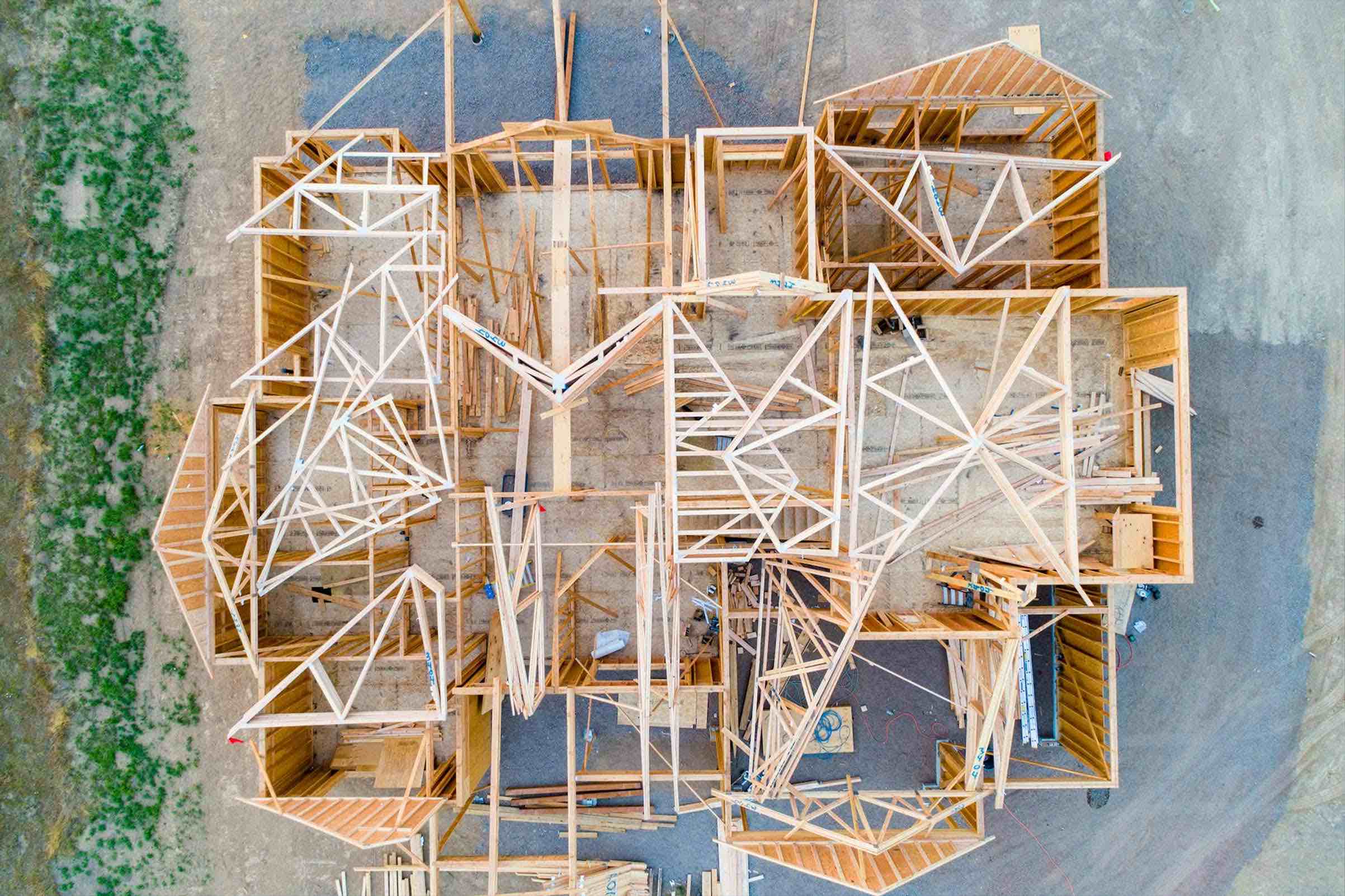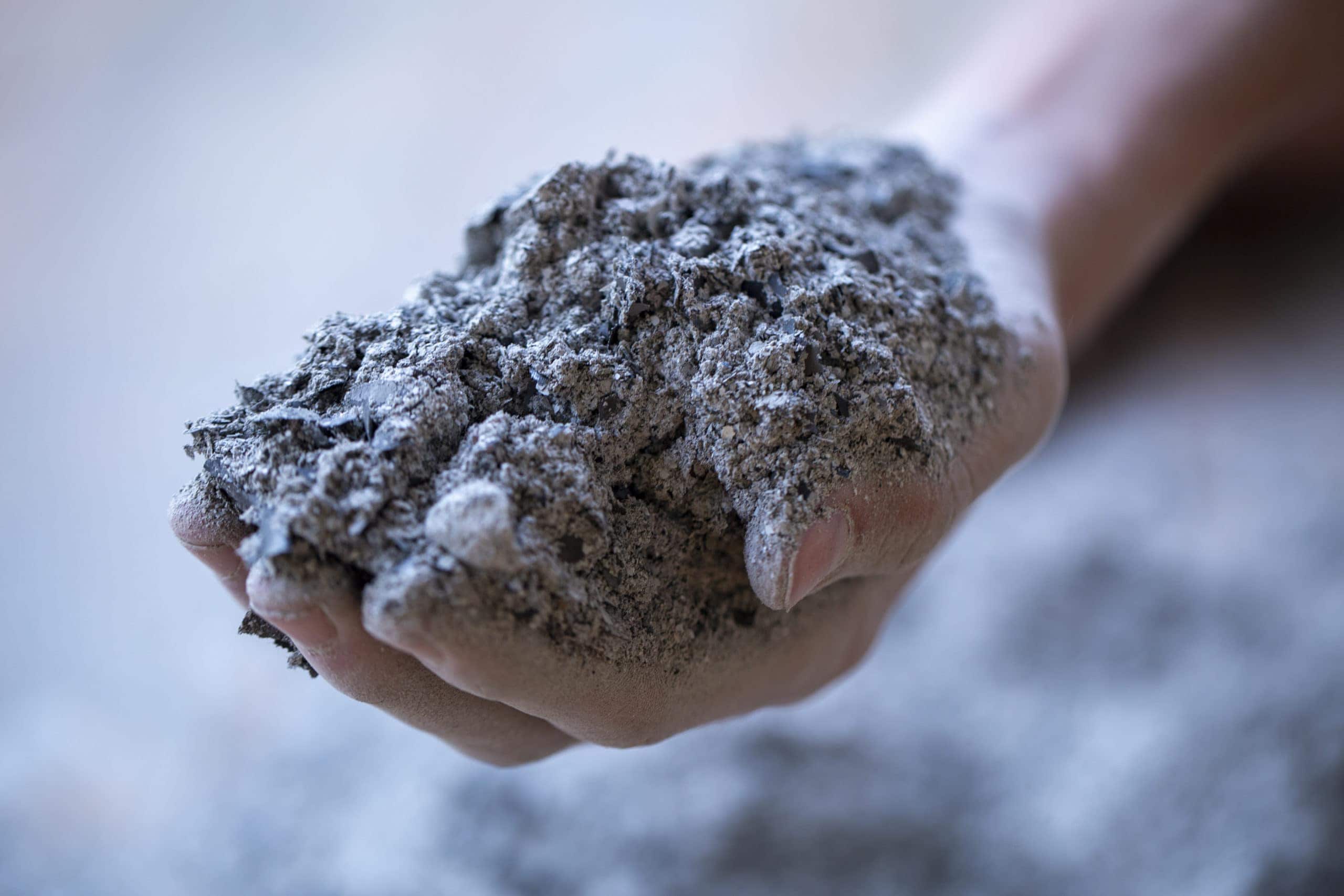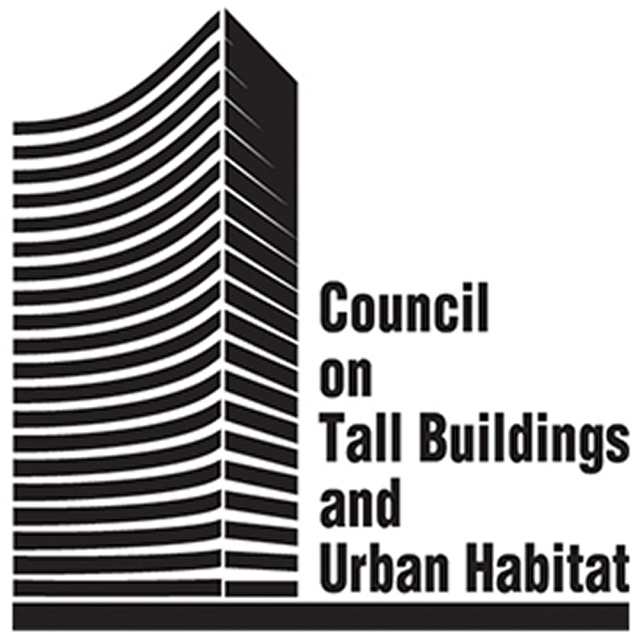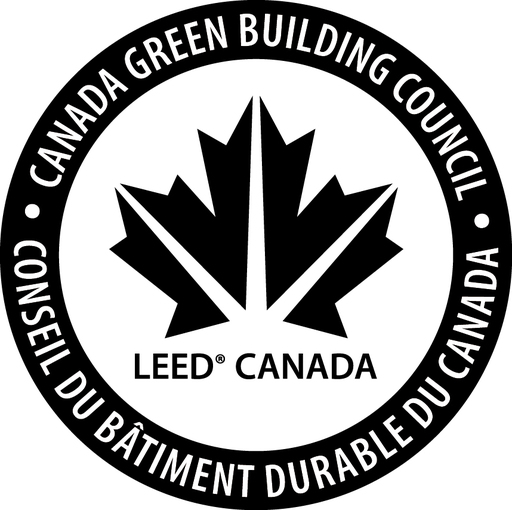
Constructing a Greener Future with Sustainable Materials


While concrete has been the dominant construction material for over a century, its production carries a significant environmental cost due to high carbon emissions and resource consumption. The urgent need for decarbonization in the construction industry is driving innovation in sustainable alternatives with lower embodied energy, such as mass timber, straw bale, hempcrete, and even mycelium-based materials. These alternatives offer environmental benefits like carbon sequestration, waste utilization, and improved insulation, paving the way for a more sustainable built environment.
For over a century, concrete has been the undisputed king of construction.Its strength, durability, and relatively low cost have made it the foundation of our modern world, shaping skylines and underpinning infrastructure from coast to coast. However, the crown worn by concrete comes with a heavy environmental burden. The production of cement, concrete's key ingredient, is a major contributor to global carbon dioxide emissions, accounting for an estimated 8% of the worldwide total as highlighted in a 2024 report by the World Economic Forum.


Add to this the vast quantities of raw materials (aggregates and water) required, and it becomes clear that relying predominantly on concrete is not a sustainable path forward in an era defined by climate change and resource depletion.
The urgent need to decarbonize the construction industry has ignited a wave of innovation, propelling researchers, architects, engineers, and builders to explore a diverse palette of alternative materials. These aren't just niche experiments; they represent a fundamental shift towards materials that are renewable, recyclable, have lower embodied energy, sequester carbon, or offer novel properties that enhance building performance and reduce environmental impact throughout their lifecycle.
This article dives into some of the most promising sustainable alternatives to conventional concrete and steel, exploring their environmental benefits, properties, and potential to reshape the future of building – including fascinating developments in engineered living materials, like those derived from fungi.
The Embodied Energy Problem: Why Alternatives Matter
Before we explore the materials, it's crucial to understand the concept of "embodied energy." This refers to the total energy consumed by a material from raw material extraction, through manufacturing, transportation, and construction, to its eventual demolition and disposal. Traditional materials like concrete, steel, and virgin plastics have high embodied energy due to energy-intensive manufacturing processes (like the high heat required for cement kilns).
Sustainable alternatives often boast significantly lower embodied energy. They might use renewable resources, require less processing, utilize waste streams, or even absorb carbon dioxide during their growth or curing phases. By choosing materials with lower embodied energy, we can drastically reduce the carbon footprint of our buildings even before they are occupied.

Mass Timber: Building Tall with Wood

Perhaps the most prominent and rapidly adopted alternative in recent years is mass timber. Unlike traditional light-frame wood construction, mass timber products like Cross-Laminated Timber (CLT), Nail-Laminated Timber (NLT), and Glued Laminated Timber (Glulam) use engineered wood panels or beams made from smaller pieces of lumber glued or fastened together. This process creates large, strong structural elements capable of supporting multi-story buildings.
The sustainability advantages of mass timber are compelling:
- Carbon Sequestration: As trees grow, they absorb CO2 from the atmosphere and store it as carbon within their wood fibers. When used in buildings, this carbon remains stored for the life of the structure, effectively turning buildings into carbon sinks. A 2024 study highlights how timber-based building typologies can act as carbon sinks.
- Renewable Resource: Sustainably managed forests are a renewable resource, meaning trees can be replanted and regrown, continuing the carbon cycle.
- Lower Embodied Energy: Producing mass timber is significantly less energy-intensive than manufacturing concrete or steel.
- Construction Efficiency: Mass timber components are often prefabricated off-site, leading to faster, quieter, and less wasteful construction on site.
Concerns about fire safety are often raised, but extensive testing has shown that large timber members char on the exterior at a predictable rate, creating an insulating layer that protects the structural core and maintains integrity longer than unprotected steel, which can buckle under high heat. While codes are still evolving, mass timber is increasingly being approved for taller and larger buildings, demonstrating its potential as a viable structural alternative.
Straw Bale Construction: Turning Waste into Walls

Straw bale building utilizes the bales of straw – a byproduct of grain harvesting, often considered waste – as structural or non-structural infill within a frame. These bales are then typically rendered with natural plasters like earth or lime.
The sustainability credentials of straw bale construction are strong:
- Waste Utilization: It repurposes agricultural waste that might otherwise be burned (releasing carbon) or decompose (releasing methane).
- Exceptional Insulation: Dense straw bales provide excellent thermal insulation, resulting in significantly lower heating and cooling demands for the building and thus reduced operational energy consumption.
- Low Embodied Energy: Straw requires very little energy to produce and process compared to conventional insulation materials.
- Breathability: Walls plastered with natural renders are breathable, helping to regulate indoor humidity and improve air quality.
While primarily suited for low-to-medium rise buildings, straw bale offers a compelling low-tech, high-performance alternative, particularly valuable in agricultural regions where straw is abundant. It does require careful detailing to prevent moisture issues and demands specific construction skills, but it offers a path to building with minimal environmental impact.
Hempcrete: The Carbon-Negative Potential

Hempcrete (or Hemplime) is a composite material made from the woody core of the hemp plant (hemp hurds) mixed with a lime binder and water. It's used as a non-structural insulation and infill material, often cast around a timber frame.
Hempcrete's sustainable appeal is multifaceted:
- Carbon Sequestration: Hemp grows rapidly and absorbs significant amounts of CO2. The lime binder also absorbs CO2 from the air as it cures, making hempcrete potentially carbon-negative over its lifespan. A 2024 study on hemp-based eco-concrete masonry blocks highlights its carbon footprint reduction and CO2 uptake.
- Low Embodied Energy: Both hemp processing and lime production have lower embodied energy than cement.
- Excellent Thermal and Acoustic Performance: Hempcrete offers good insulation and thermal mass properties, regulating temperature swings. Its porous nature also provides good sound absorption.
- Durability and Breathability: It's resistant to pests and mold, and like lime plasters, it's breathable, managing moisture effectively.
Currently, hempcrete is more expensive than conventional insulation materials and requires specialized knowledge to install and finish correctly. However, as the hemp industry grows and building codes adapt, its potential as a healthy, high-performance, carbon-sequestering building material is immense.
The Fascinating World of Mycelium

Moving into the realm of truly innovative and potentially revolutionary materials, we encounter mycelium. Mycelium is the root-like structure of fungi – the vast, branching network of threads that fungi use to colonize substrates. Researchers and companies are now harnessing this natural growth process to create sustainable building materials.
The process typically involves placing mycelium spores onto a substrate made from agricultural waste products like sawdust, straw, or corn husks. The mycelium then grows through the substrate, binding the loose particles together into a solid, lightweight, and surprisingly strong composite material. The growth process is low-energy, takes place at room temperature, and requires minimal resources. Once the desired shape and density are achieved, the material is typically heated to stop the growth and dry it out.
The potential of mycelium-based materials is vast:
- Waste Upcycling: They turn low-value agricultural or forestry waste into valuable building products.
- Low Embodied Energy: The primary energy input is often just the sterilization of the substrate and the final drying process, a fraction of that needed for concrete or steel.
- Biodegradable: At the end of a building's life, mycelium materials can often be composted, returning nutrients to the earth.
- Tunable Properties: By controlling the type of fungi, the substrate, and the growing conditions, engineers can influence the material's properties, creating products suitable for insulation, acoustic panels, potentially even structural elements in the future. Recent academic papers, such as one from 2022 on mycelium and architecture, demonstrate the wide range of applications and ongoing research.
- Fire Resistance: Early tests indicate good fire-resistant properties.
Currently, mycelium materials are primarily used for non-structural applications like insulation, packaging, and decorative panels. Scaling production, ensuring consistent material properties, and developing structural applications are ongoing challenges. However, the concept of "growing" building components offers a paradigm shift, moving towards a future where materials are cultivated rather than manufactured in energy-intensive factories. This aligns with the concept of "engineered living materials," where biological processes are used to create functional, sustainable products.
Recycled and Innovative Materials: A Broader Spectrum
Beyond these headline-grabbing alternatives, sustainability in construction also involves smarter use of existing materials and waste streams:
- Recycled Aggregates: Using crushed concrete or asphalt waste as aggregate in new concrete mixes or road bases reduces the need for virgin aggregate extraction. A 2025 presentation on expanding the application of recycled concrete aggregates highlights its benefits.
- Recycled Steel: Steel is highly recyclable, and using recycled scrap in electric arc furnaces significantly lowers the energy required compared to producing steel from raw iron ore.
- Recycled Plastics: Innovative companies are exploring ways to incorporate recycled plastics into building materials, such as insulation boards, bricks, or even as additives in concrete mixes to improve properties or reduce cement content. A 2018 project at Duke University explored creating building bricks from recycled plastic.
- Natural Plasters and Paints: Using clay, lime, and natural pigments for finishes reduces the reliance on synthetic materials that can contain volatile organic compounds (VOCs) and have higher embodied energy.

Challenges and the Path Forward
Adopting these sustainable alternatives is not without its challenges. Cost can be a barrier, especially for materials that are not yet mass-produced. Supply chains need to be developed and scaled. Builders and tradespeople require training in new techniques. Building codes, often slow to change, need to accommodate these novel materials and systems.
However, the momentum is building. As the environmental imperative becomes clearer and the performance benefits of these materials are proven, their adoption will accelerate. Government incentives, progressive building codes, increasing consumer demand for green buildings, and continued research and development are all playing crucial roles. The 2025 Sustainable Construction Barometer by the World Economic Forum highlights increasing awareness and the need for greater action in sustainable construction.
Building the Future, Sustainably
Concrete has served humanity well, but the future of construction lies in diversification and innovation. From the proven strength and carbon storage of mass timber to the insulating power of straw and hemp, and the exciting, low-energy potential of materials grown from mycelium, a wealth of sustainable alternatives is emerging.
Embracing these materials is more than just an environmental choice; it's an opportunity to build healthier, more resilient, and higher-performing structures. It requires a shift in mindset from a linear "take-make-dispose" approach to a circular economy where materials are renewable, reusable, and have minimal impact.
As we look to the future, the construction industry has a critical role to play in mitigating climate change. By exploring, developing, and utilizing these innovative and sustainable materials, we can lay the foundation for a greener, more sustainable built environment for generations to come. The era of building beyond concrete has truly begun.
















